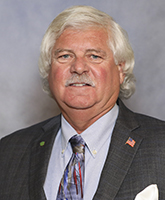
Human connection is one of our basic needs. Perhaps this has never been truer than right now, as we continue to grapple with the pandemic’s impact on how we interact at work, with our loved ones and across our communities.
We have all experienced the benefits of good relationships as well as the damage that poor ones often cause, both in our personal lives and in our workplaces. As our organizations continue to face labor shortages and adapt to the changing world of work, safety professionals play a critical role in helping our workers feel seen, heard and understood. Workers want to feel connected to the organization’s goals and mission. Through our interactions with people, we can demonstrate that the organization cares about them and values their contributions.
When we demonstrate genuine respect for our employees, ask them about their knowledge and encourage their ingenuity, we grow the critical trust needed to retain our workforce and help our organizations thrive, even during times of uncertainty.
Connecting With Our Workers
So what are some proactive steps we can take to connect with members of our teams? Here are four practices that have worked during my career:
1. Get to know your workers. It may seem like a small thing, but know your workers by their first name, and ask about their families, loved ones and interests outside of work. These conversations can help you find commonalities and develop a deeper connection that will help you engage workers in safety initiatives.
2. Ask instead of tell. As Edgar Schein explains in Humble Inquiry, we need to consciously work at “asking questions to which you do not already know the answer, [and] building a relationship based on curiosity and interest in the other person.” It also means we listen more and talk less. This approach reduces fear and fosters an environment in which workers feel empowered to report concerns, openly share their experiences and offer solutions.
3. Foster two-way communication. As you get to know employees, it is OK to let them know you do not have all the answers. This leads to more open dialogue and promotes shared learning. It also allows for mutual problem-solving in which workers have specific input into safety activities such as training, job scheduling, task analyses, risk assessments and incident investigations.
4. Encourage employees to talk about their work and safety at home. I have heard some great stories from people who have talked with their families about safety at work. It was clear that explaining the risks they face each day and discussing the systems implemented and actions taken to keep them safe created a lasting impression.
Connecting With Our Leaders
Our daily actions to connect with workers can also help us improve our relationships with corporate leaders. We can take some additional actions that position us as their trusted partner and bridge to the workforce. In my experience, these four steps are key:
1. Look for opportunities to interact. Many colleagues have told me they have experienced greater access to leaders during the pandemic than ever before. Capitalize on these opportunities to educate your leaders on the business value of workplace safety, including lower costs, greater productivity and higher employee engagement and satisfaction.
2. Respect the leader’s time. When working with emerging safety professionals, I often share this advice: “Be brief. Be bright. Be gone.” We make our best impression when we speak their language and keep our communications focused and concise.
3. Be solution-oriented. Throughout my career, I have been fortunate to work with leaders who wanted to know if there were problems. But they also expected our team to bring forward evidence-based recommendations. Thanks to this culture, we were able to collaborate with our workforce to gather information and identify solutions.
4. Engage leaders in safety. We are all familiar with the concept of “walking the talk.” We can help our leaders demonstrate their commitment to keeping workers safe, be it during activities such as new employee orientation, safety committee meetings or site tours. Workers notice when leaders show up.
As safety professionals, we interact with more people across our organizations each day than almost any other function. The relationships we create are key to helping us create a safer, stronger future for all workers and their loved ones.